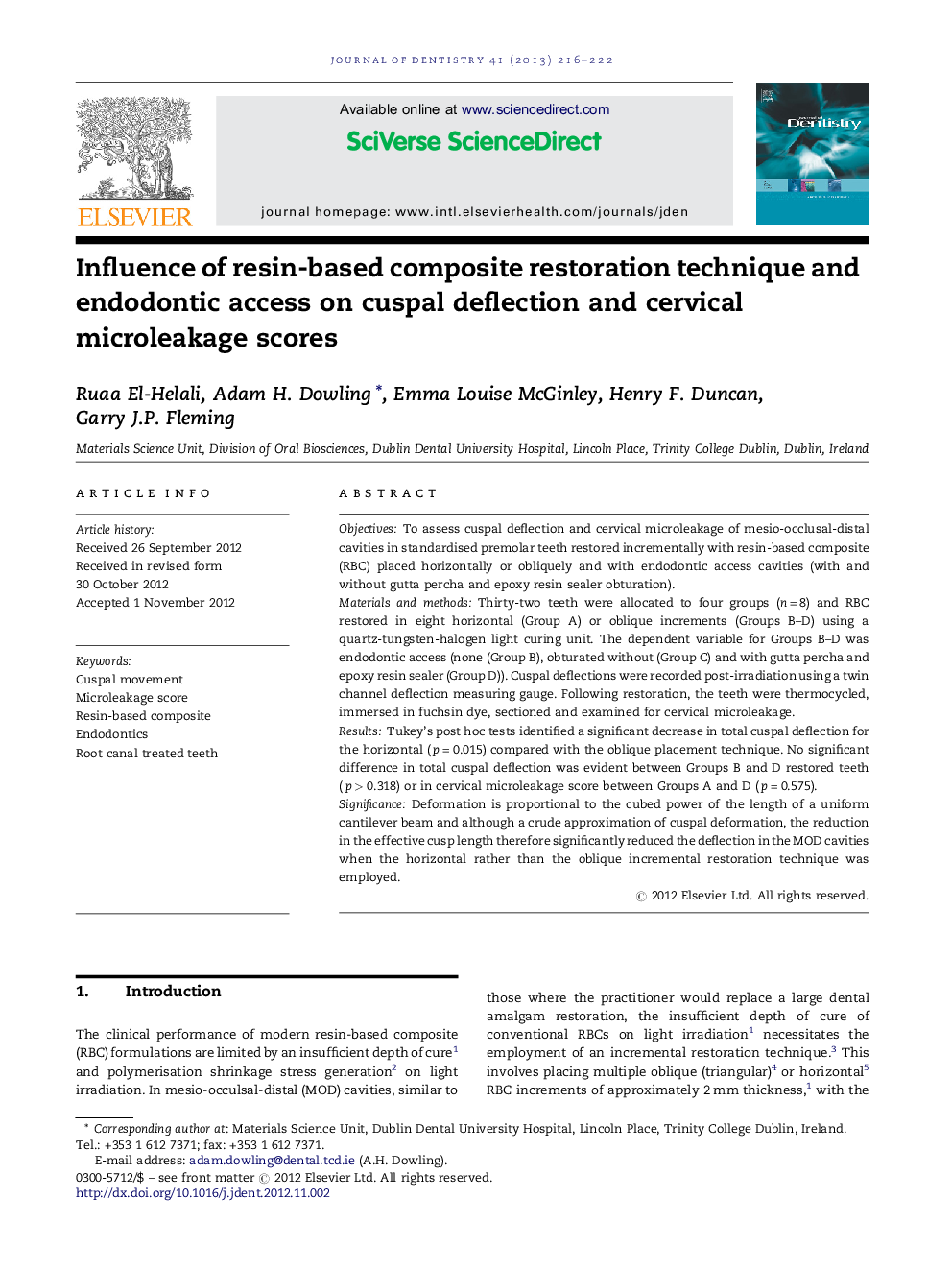| Article ID | Journal | Published Year | Pages | File Type |
|---|---|---|---|---|
| 3144985 | Journal of Dentistry | 2013 | 7 Pages |
ObjectivesTo assess cuspal deflection and cervical microleakage of mesio-occlusal-distal cavities in standardised premolar teeth restored incrementally with resin-based composite (RBC) placed horizontally or obliquely and with endodontic access cavities (with and without gutta percha and epoxy resin sealer obturation).Materials and methodsThirty-two teeth were allocated to four groups (n = 8) and RBC restored in eight horizontal (Group A) or oblique increments (Groups B–D) using a quartz-tungsten-halogen light curing unit. The dependent variable for Groups B–D was endodontic access (none (Group B), obturated without (Group C) and with gutta percha and epoxy resin sealer (Group D)). Cuspal deflections were recorded post-irradiation using a twin channel deflection measuring gauge. Following restoration, the teeth were thermocycled, immersed in fuchsin dye, sectioned and examined for cervical microleakage.ResultsTukey's post hoc tests identified a significant decrease in total cuspal deflection for the horizontal (p = 0.015) compared with the oblique placement technique. No significant difference in total cuspal deflection was evident between Groups B and D restored teeth (p > 0.318) or in cervical microleakage score between Groups A and D (p = 0.575).SignificanceDeformation is proportional to the cubed power of the length of a uniform cantilever beam and although a crude approximation of cuspal deformation, the reduction in the effective cusp length therefore significantly reduced the deflection in the MOD cavities when the horizontal rather than the oblique incremental restoration technique was employed.
